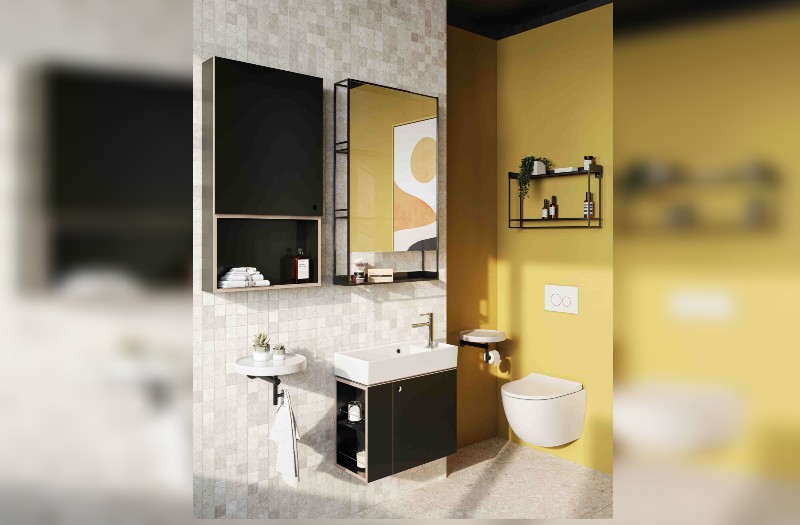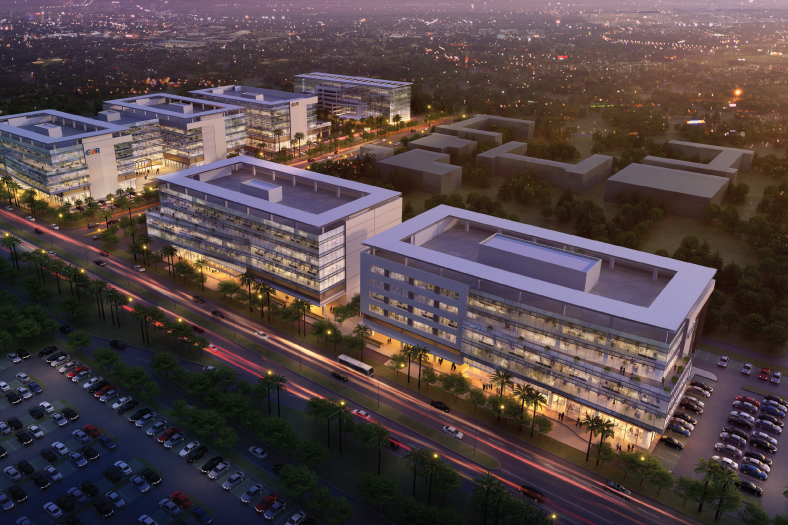The integrated passenger terminal at Netaji Subhas Chandra Bose International (NSCBI) Airport was executed on an EPC basis by a special purpose vehicle formed between ITD Cementation India (ITD Cem) and its parent Italian-Thai Development Public Co. Ltd., Thailand (ITD).
The projectThe new terminal started commercial operations on March 25th, 2013.
CapacityThe terminal has a capacity now to handle 20 million passengers annually against the existing capacity of 7.46 million passengers.
Project costProject values around Rs 2,000 crore.
Solutions undertakenA mix of right people with right skill at right place.
Architect involvedParsons Brinckerhoff
Kolkata airport, named as Netaji Subhas Chandra Bose International Airport, has three terminals: domestic, international and a cargo terminal. It is linked by the city roadways and suburban railway system.For the enhancement of the Airport capacity and facilities, Government of India has decided to go for modernisation of Netaji Subhash Chandra Bose International Airport. The development plans, as envisaged during working out the requirement is as follows:
Scope of workIntegrated Terminal buildings with
RCC pile foundation
Waterproofing, RCC substructure, basement
RCC superstructure, brickwork etc.
Steel roofing and profile roof sheeting works
All architectural, false ceiling and finishing works
Structural steel work including fabrication and erection of columns (30m height and average weight 35 MT each) and truss (of average span 100m and average weight 120 MT each)
Water supply, storm water drainage, sewerage system
Fire-fighting system
Air–conditioning and ventilation
Escalators, elevators, travelators
Internal electrification.
Elevated road and Flyover
RCC pile foundation
RCC superstructure
Steel girders
Total length of elevated road is 890 metres consisting of RCC cast-in-situ beam and slab.
Total length of VIP road Flyover is 457m. Both side RCC approach, 12 spans of RCC girders and central 3 spans of with cast-in-situ girder including central verge with Steel Plate Girder with 27 metres span
There are 15 nos. of span of length 18 metres and width 7.5 metres each.
Car parking including basement
RCC pile foundation,
Waterproofing, RCC substructure, basement,
RCC superstructure, brickwork etc.
All architectural and finishing works,
Fire-fighting system and ventilation system.
Service yard with DG installation, Electrical substation, AC plant room, underground reservoir and RCC tunnel.
C.C. Roads and Storm water drainage system.
Construction of Relocated Substation.
Following finalisation of basic architectural layout and services requirement, structural design was taken up. Basic structural configuration was with RCC bored piling foundation, RCC basement, substructure and superstructure. Roofing was conceived with structural steel truss overlain with metal composite insulated roofing. The structural design was done based on the basic standard design criteria. Item wise scope of work is calculated on the basis of preliminary design. Flooring, facade, cladding, false ceiling and other architectural quantities are also worked out based on the final architectural layout and arrangements. Scope of all services has been finalised based on international standards of airport facilities.
In the late 2007, AAI had launched a Request for Proposal (RFP) for Prequalification for Construction of Integrated Passenger Terminal Building at NSCBI (Netaji Subhash Chandra Bose) Airport, Kolkata. Following receiving proposals from International reputed organisations and rigorous exercise of technical and commercial evaluations, the contract of Airport modernisation was awarded to ITD-ITD Cem JV, a consortium of Italian Thai Development Public Limited Company, Thailand and ITD Cementation Company Limited, India. Italian Thai Development Public Limited Company, Thailand had the experience of building the Suvarnabhumi Airport at Bangkok, one of the best airports in the world.
The construction was started in November 2008.
Basic construction planning worksIt involved preparation of Construction schedule, resource requirement plan, material procurement schedule, design of enabling structures, construction facility drawings and steel shop drawings etc. This also involved preparation of Quality Assurance plan; Inspection and Test plan; Health and Safety plan; Environment management plan even. These are done complying the International Standards of ISO: 9000 and ISO: 14000.
Preliminary works The preliminary works included site investigation, ground preparation, reclamation; dismantling some of the existing structure; utility diversion, initial pile load testing; mobilization of required plant and machinery; site setup; commissioning of plant; site drainage arrangement, surveying and setting out, fixing up the alignment, establishment of site survey reference pillars and bench marks were done during initial time period with all existing airport facilities fully operative. A few mock-up exercises have also been carried out to establish the right method and sequencing of construction activities.
PlanningBasic construction planning have been done considering contractual time-frame, site condition, structural configuration, sequence of work, construction convenience, junction configuration, environmental condition, physical and weather constraints, best utilisation of resource, subsoil condition, operational time-cycle. Due consideration is given to airport operation and restriction, local regulations, environment management, project financing, material availability and lead time, equipment manufacturing process and time involved, testing and commissioning of specialised items and equipments, interface with other aspects and local holidays. Manpower, machinery and material deployment schedule was done based on standard productivity and efficiency level, deployment time.
Facility managementFacility management needed to frame out a plan for traffic management, since the main artery from city to the terminal buildings had to be closed for construction. The project area was within a running busy airport of an Indian metro city, it posed tremendous effort for maintaining the existing provisions required for operation of an airport, maintain all security regulations, facilities and safety of all structure, services, employees and passengers. Construction road, vehicle movement, plant deployment, drainage plan, illumination, emission, disposal of construction waste, reuse of available material etc were planned considering the airport operation, passenger and cargo movement, navigation facilities, local and administrative restrictions, proximity of residential area, local sensitivity and parallel development programme.
Enabling worksEnabling works involved installation and commissioning of a high capacity fully automatic concrete batching plant with site laboratory, cement and aggregate storage, weather recorder, maintenance and parking area; a comprehensive fabrication yard including power setup, sand-blasting and painting area, fabrication platform, material handling gantries and vehicle movement area; setup an rebar fabrication area. Other establishment like material storage and warehouse, fuel storage, power generation stations and illumination network, site drainage pumps and channels, first-aid centre, induction room, canteen and refreshment shed in a planned manner within limited working area. Site gradation were done for making the area ready to for construction works involving demolition of existing structures; fence the area; temporary boundary wall; dewatering of pond, slush-removal and reclamation; Utility diversion including HT and LT power line, water and sewerage line, telephone and communication cables, fire-fighting piping etc; install water source and distribution network.
Construction workMain construction work started with pile installation. Prior to installation of RCC bored piles, Initial vertical static pile load tests for different diameter of piles and at different locations were carried out. All the pile load tests show satisfactory test results.
RoofingRoofing work was taken up immediately the steel roof-supporting system was installed and checked. The roofing system consists of 0.9 mm thick AA 3004 aluminium alloy, comprising of four layers – KALZIP/ZIPLOCK 65/400 of corus building system, insulation layer – mineral wool of overall 150 mm thickness, compressed to 140 mm- density 48 kg per cum), one layer of vapour control barrier (polyethylene film of 0.20mm thick) with heavy duty type or double sided aluminium foil vapor control barrier, solid steel liner type trapezoidal sheeting 28-32/198-250, 0.70 mm thick 550MPA, 25 microns polyester coated hot dip galvanized steel.
False ceilingFalse ceiling system was taken up through specialised agency once the roofing work got completed. Finish of ceiling tiles is a combination of different type of material to give soothing architectutral look. It’s a combination of special polyester powder coated aluminium stip with wood grain finish; mineral fibre false ceiling tiles; GMS (galvanised mild steel) metal false-ceiling system; gypsum false ceiling.
GlazingThe structural glazing system is designed for a wind pressure of 1.2 KPA at all levels, elevations and heights, they are equalised thermally broken and self draining. Aluminium composite panel and cladding are fixed to the framing system by self-tapping screw and mechanical fastener.
47
Cookie Consent
We use cookies to personalize your experience. By continuing to visit this website you agree to our Terms & Conditions, Privacy Policy and Cookie Policy.









